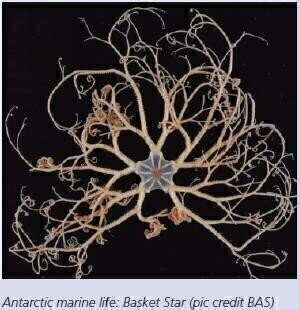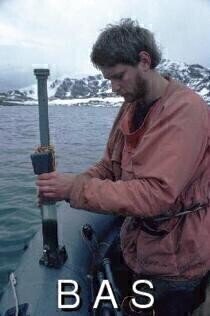News & Views
Polar Studies Underlie Indicators for Climate Change Models
Jul 30 2010
Delegates at the American Association for the Advancement of Science (AAAS) held recently in San Diego were presented with some of the latest findings of an international investigation into the distribution and abundance of Antarctica’s vast marine biodiversity — the Census of Antarctic Marine Life (CAML) - which began in 2005.
With more than 6,000 different sea floor dwelling species having so far been identified, it is the combination of long-term monitoring studies, newly gathered information on the marine life distribution and global ocean warming models, that have enabled the scientists to identify Antarctica’s marine ‘biodiversity hotspots’, explained presenter Marine Biologist Huw Griffiths, a researcher from British Antarctic Survey (BAS), one of the world’s leading research groups.
“The Polar Regions are amongst the fastest warming places on Earth and predictions suggest that in the future we’ll see warming sea surface temperatures, rising ocean acidification and decreasing winter sea ice - all of which have a direct effect on marine life. Marine animals spent millions of years adapting to the freezing, stable conditions of the Antarctic waters and they are highly sensitive to change. This means that from the scientist’s perspective they are excellent indicators of environmental change. The polar oceans are rich in biodiversity. If species are unable to move or adapt to new conditions they could ultimately die out. The loss of any unique species is therefore a loss of global diversity,” Griffiths said.
In current studies to assess the impact of climate change on lake and ocean sediments, The British Antarctic Survey, is using a CE440 elemental analyser to help in analysis of sediment cores. A spokesman for BAS said: "We have used CHN/O/S elemental analysers from Exeter Analytical for some years and initially chose the system due to its unique horizontal furnace design which made it ideal for the analysis of our sample types.
One of our recent applications for the instrument is sediment cores, laid down over periods of thousands of years, collected from lake and ocean environments because they contain a wealth of organic and inorganic remains from which it is possible to reconstruct past environmental and climate changes. Measurements of total organic carbon accumulation rates provide an index of past biological production which is often a function of
temperature, and measurements of carbon to nitrogen ratios (C:N) combined with independent measurements of the carbon stable isotopes provide a diagnostic tool for identifying the sources of the organic matter. These standard measurements underlie many of the subsequent analyses conducted on the cores".
Digital Edition
Lab Asia 31.2 April 2024
April 2024
In This Edition Chromatography Articles - Approaches to troubleshooting an SPE method for the analysis of oligonucleotides (pt i) - High-precision liquid flow processes demand full fluidic c...
View all digital editions
Events
May 05 2024 Seville, Spain
InformEx Zone at CPhl North America
May 07 2024 Pennsylvania, PA, USA
May 14 2024 Oklahoma City, OK, USA
May 15 2024 Birmingham, UK
May 21 2024 Lagos, Nigeria












.jpg)






